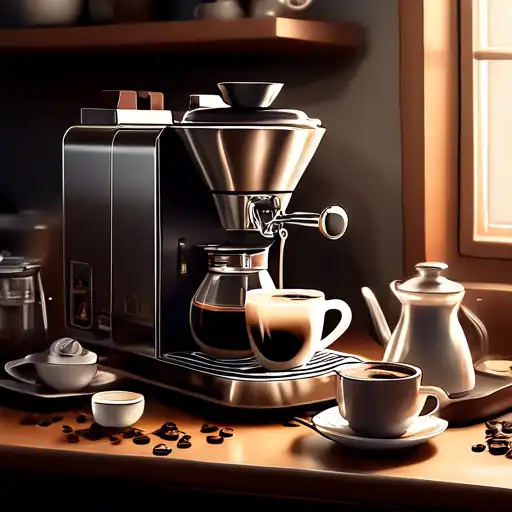Introduction to Homemade Coffee Mastery
There's nothing quite like starting your day with a cup of perfectly brewed coffee. While it's easy to pop into your local coffee shop, mastering the art of making coffee at home can be both rewarding and cost-effective. This guide will walk you through the steps to achieve barista-level coffee in the comfort of your own kitchen.
Choosing the Right Coffee Beans
The foundation of any great cup of coffee is the beans. Opt for high-quality, freshly roasted beans for the best flavor. Consider the roast level that suits your taste—light roasts are more acidic and retain more of the bean's original flavor, while dark roasts offer a bolder, richer taste.
Grinding Your Coffee Beans
For the freshest taste, grind your beans just before brewing. The grind size should match your brewing method—fine for espresso, medium for drip coffee, and coarse for French press. Investing in a good quality burr grinder can make a significant difference in the consistency of your grind.
Water Quality and Temperature
The water you use can affect the taste of your coffee. Always use fresh, filtered water if possible. The ideal brewing temperature is between 195°F and 205°F. Too hot, and you risk burning the coffee; too cool, and you won't extract enough flavor.
Brewing Methods Explored
There are several methods to brew coffee at home, each offering a unique flavor profile. The French press is great for full-bodied coffee, while AeroPress offers a cleaner, more concentrated cup. Drip coffee makers are convenient for everyday use, and espresso machines can produce rich, creamy shots for those who prefer a stronger brew.
Perfecting Your Coffee Ratio
The golden ratio for brewing coffee is about 1 to 2 tablespoons of coffee per 6 ounces of water, but feel free to adjust based on your taste preferences. Experimenting with the ratio can help you find your perfect cup.
Maintaining Your Equipment
Regular cleaning of your coffee-making equipment is essential to prevent old oils and residues from affecting the taste of your coffee. Descale your machine and clean your tools after each use to ensure the best flavor every time.
Experimenting with Flavors
Once you've mastered the basics, don't be afraid to experiment with adding flavors to your coffee. Spices like cinnamon or cardamom, a dash of vanilla extract, or even a pinch of salt can enhance the natural flavors of your coffee.
Conclusion: The Joy of Homemade Coffee
Making coffee at home is an art that requires patience and practice, but the results are well worth the effort. By selecting quality beans, mastering your brewing method, and fine-tuning your technique, you can enjoy a perfect cup of coffee anytime. Remember, the best coffee is the one that tastes right to you, so don't hesitate to experiment and find your personal preference.
